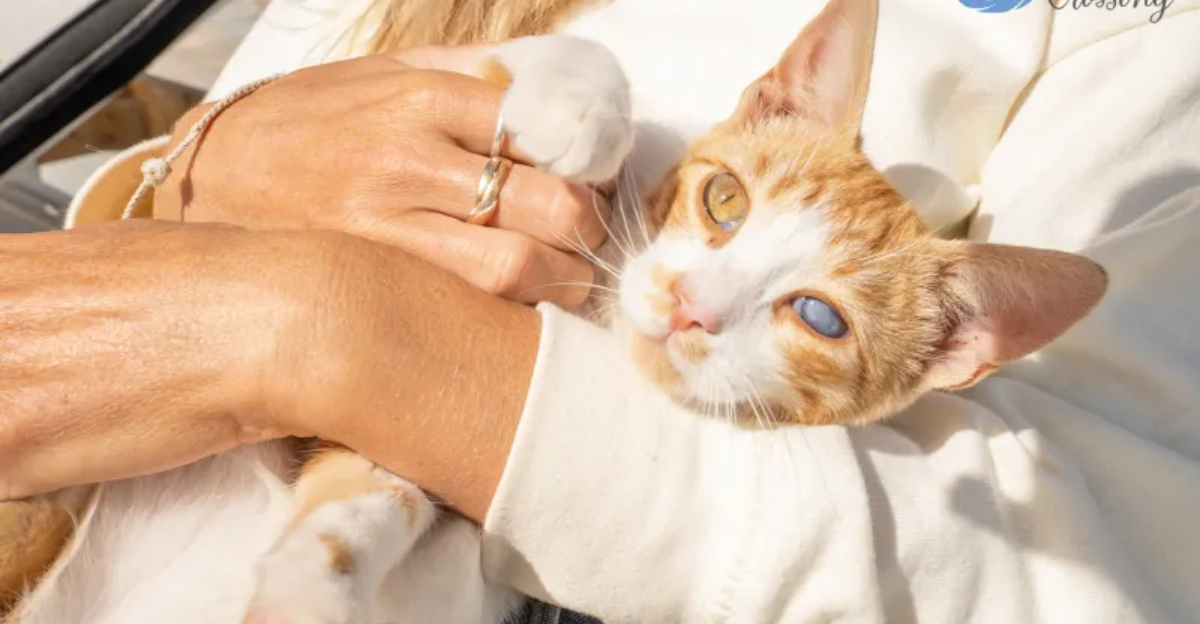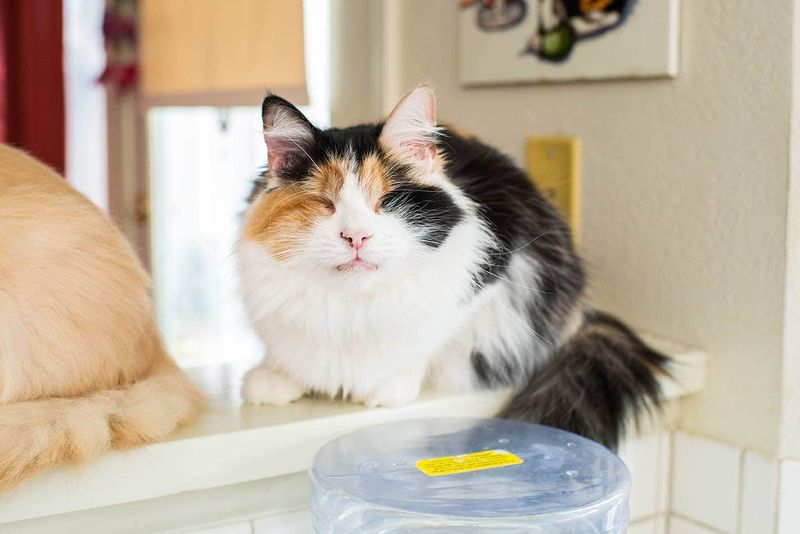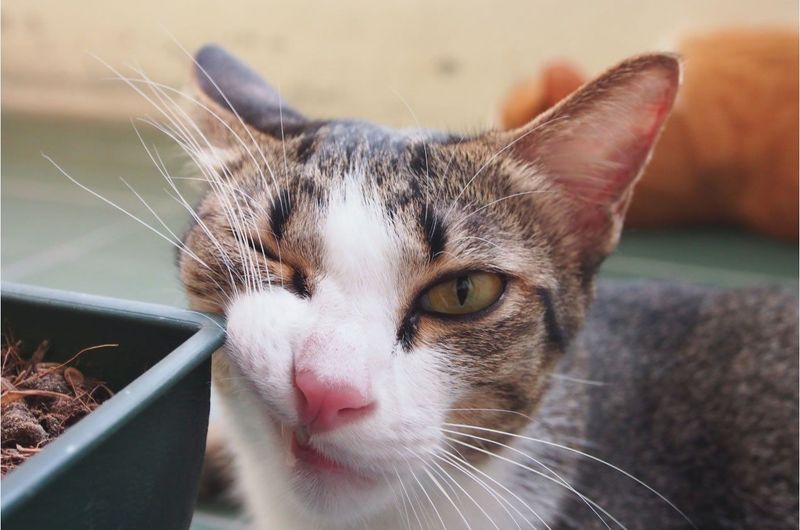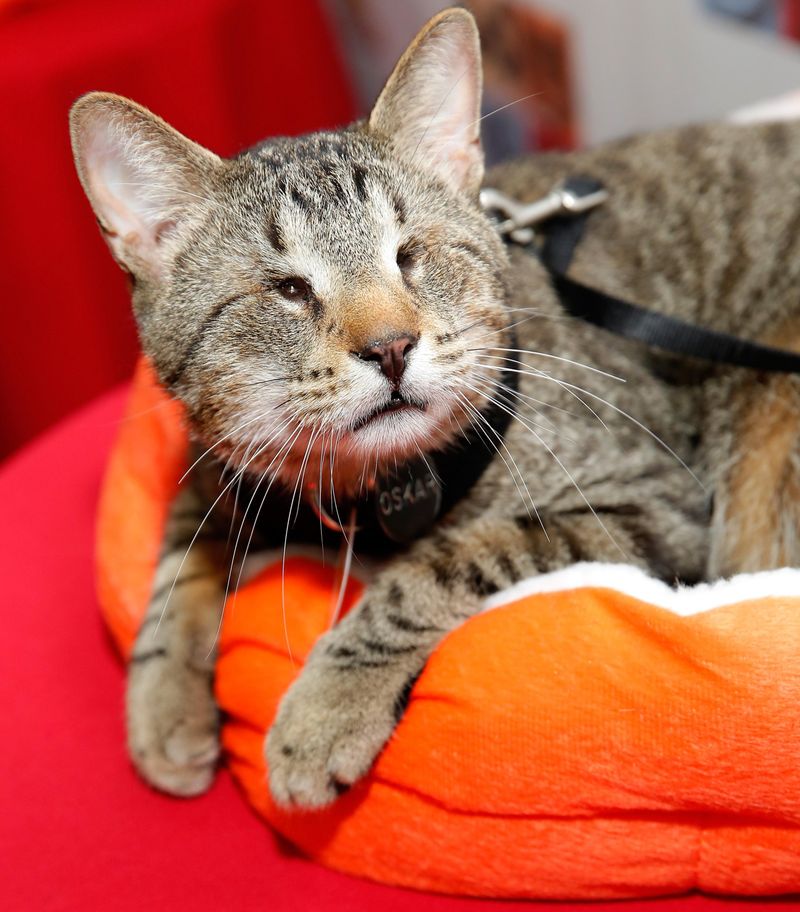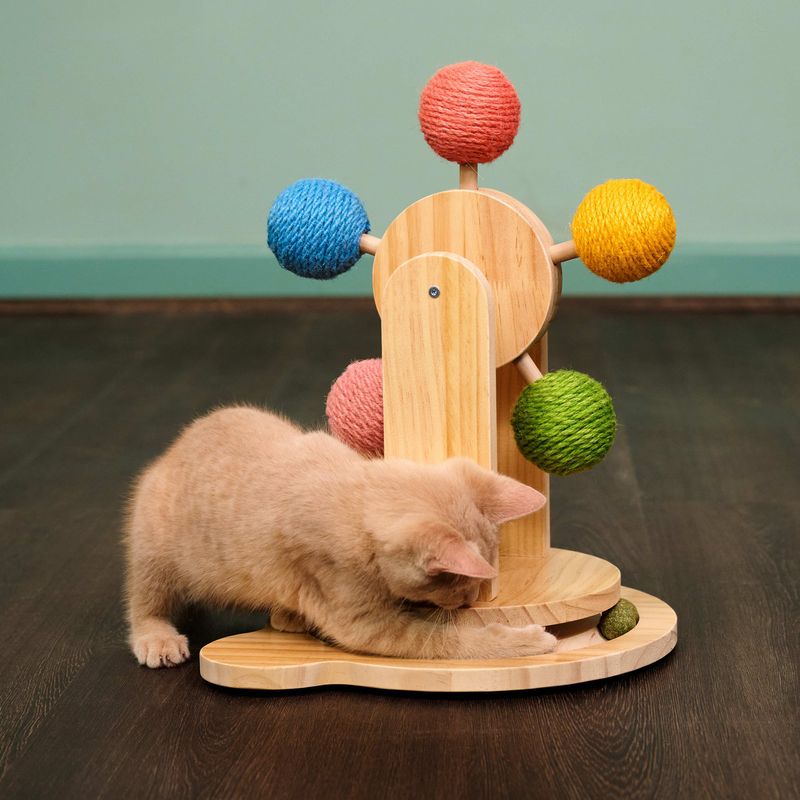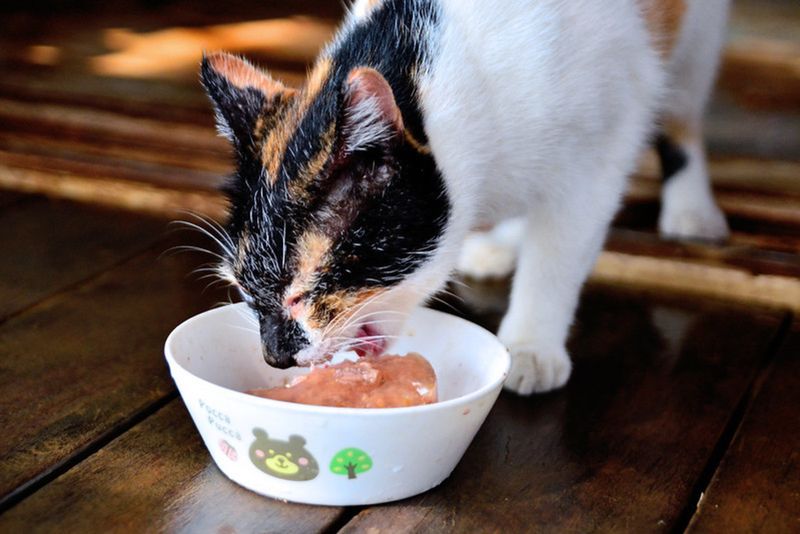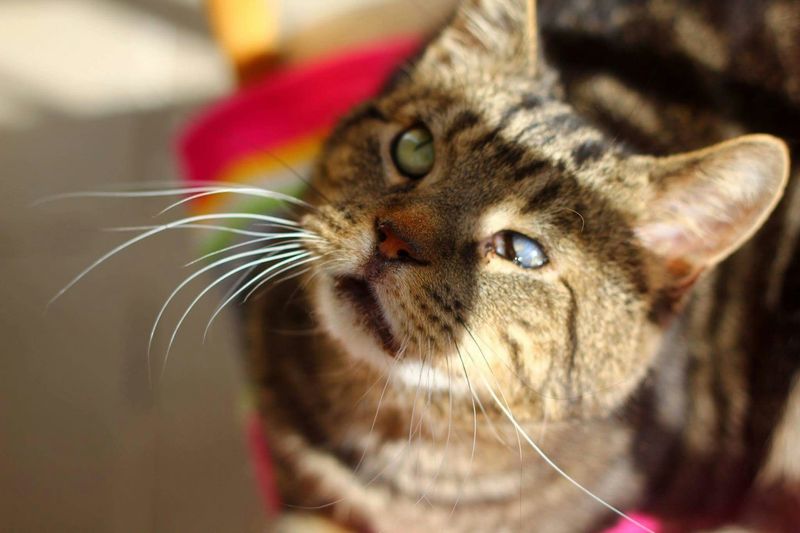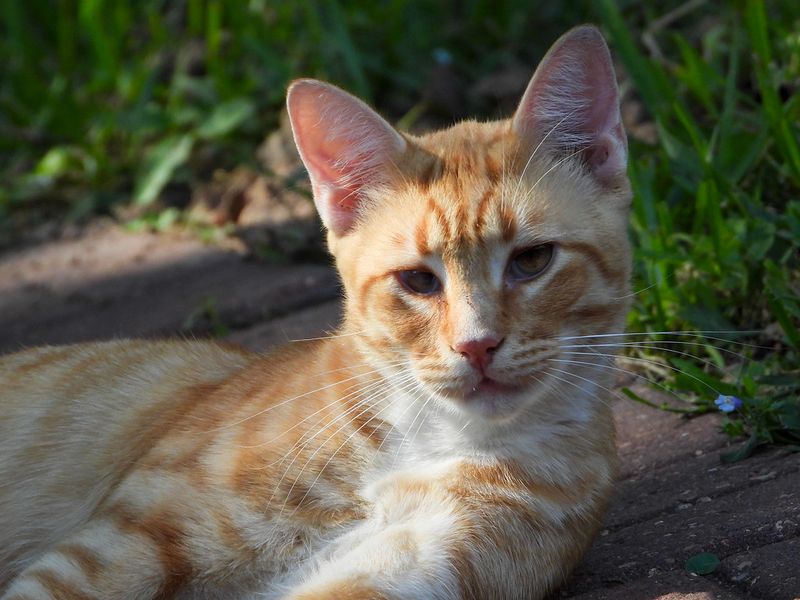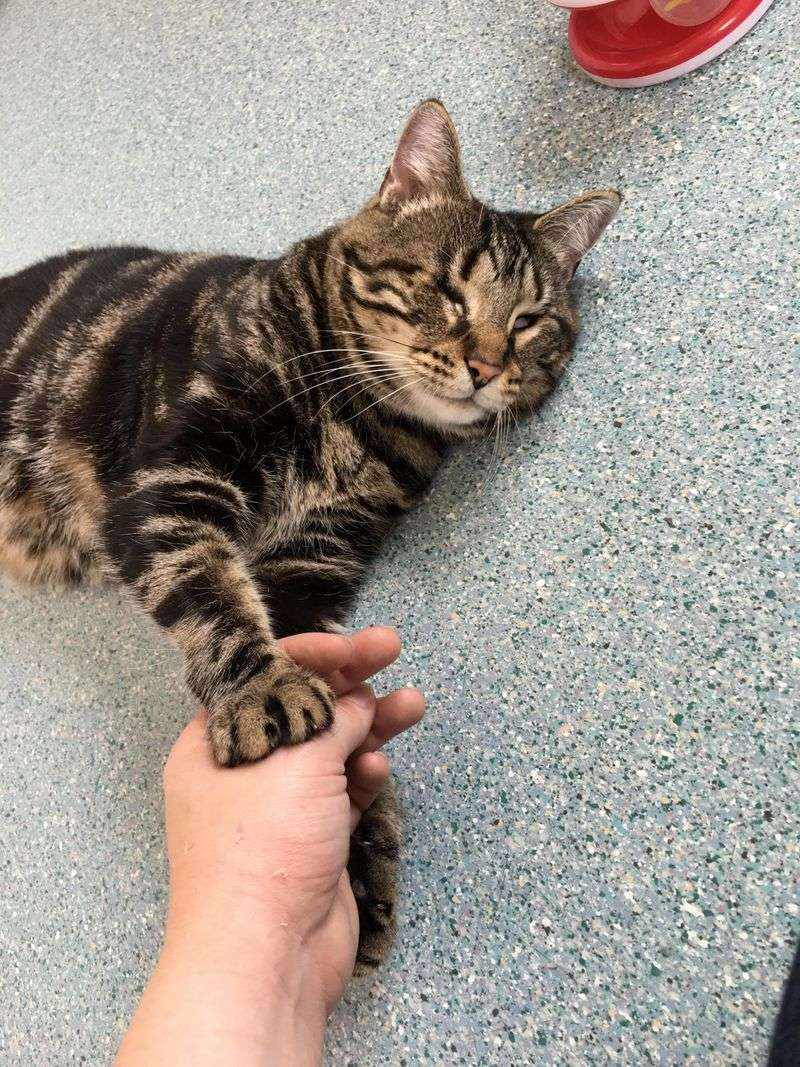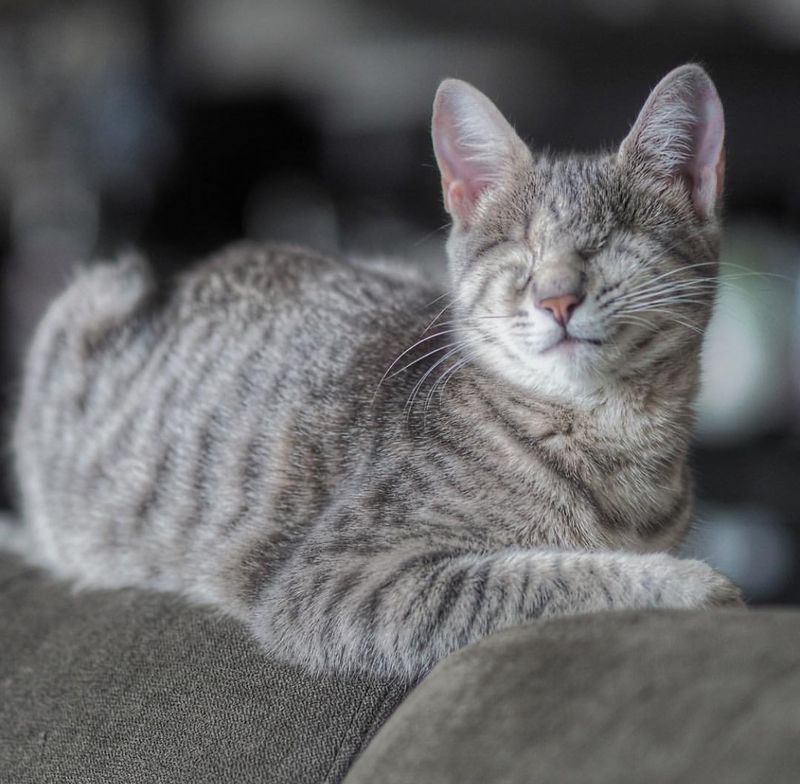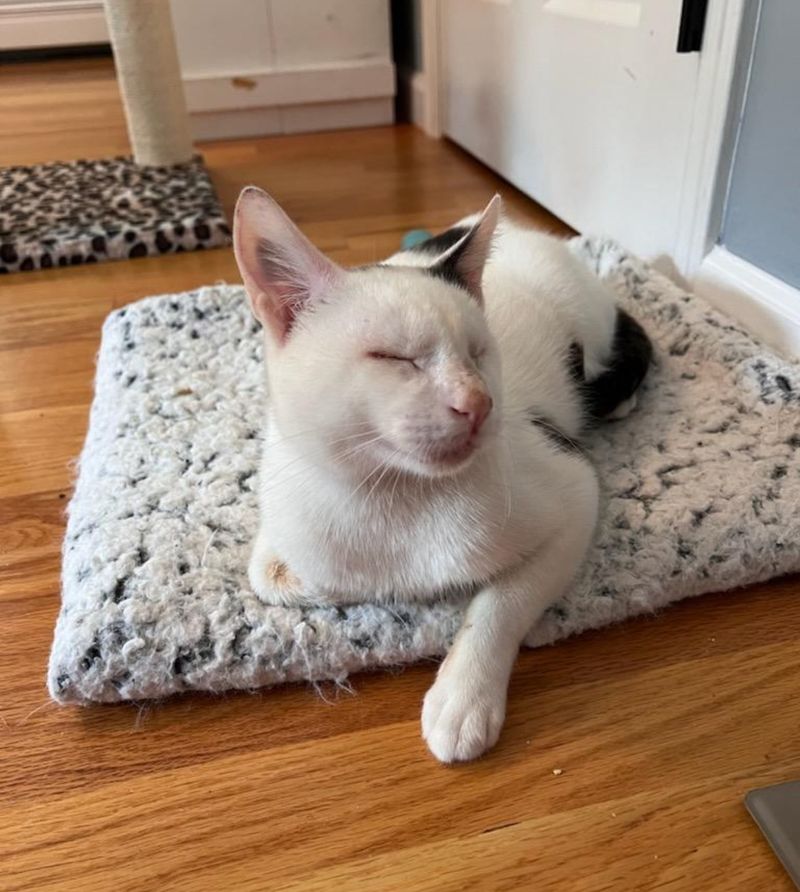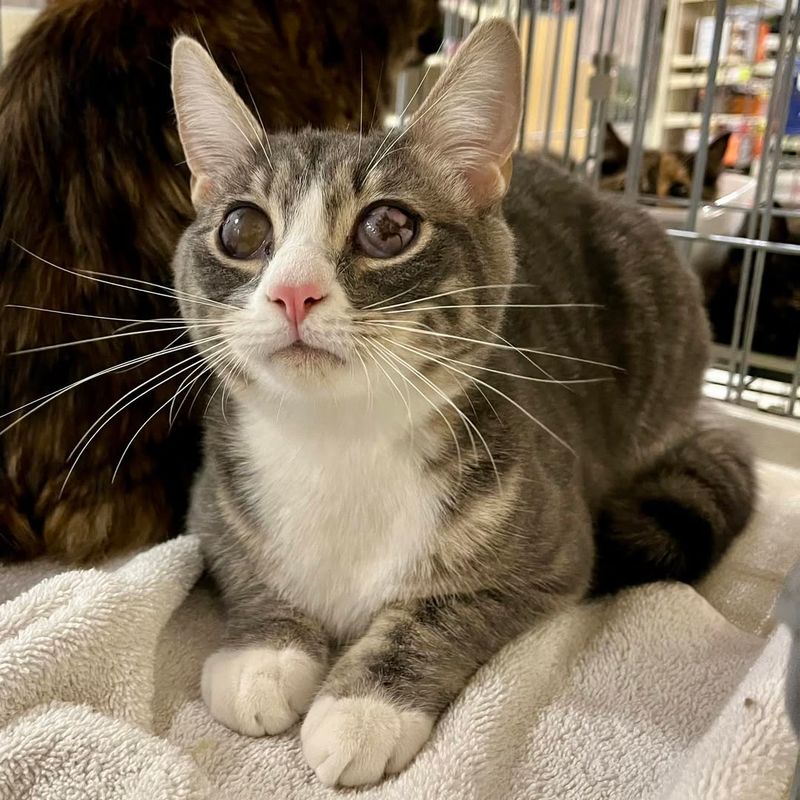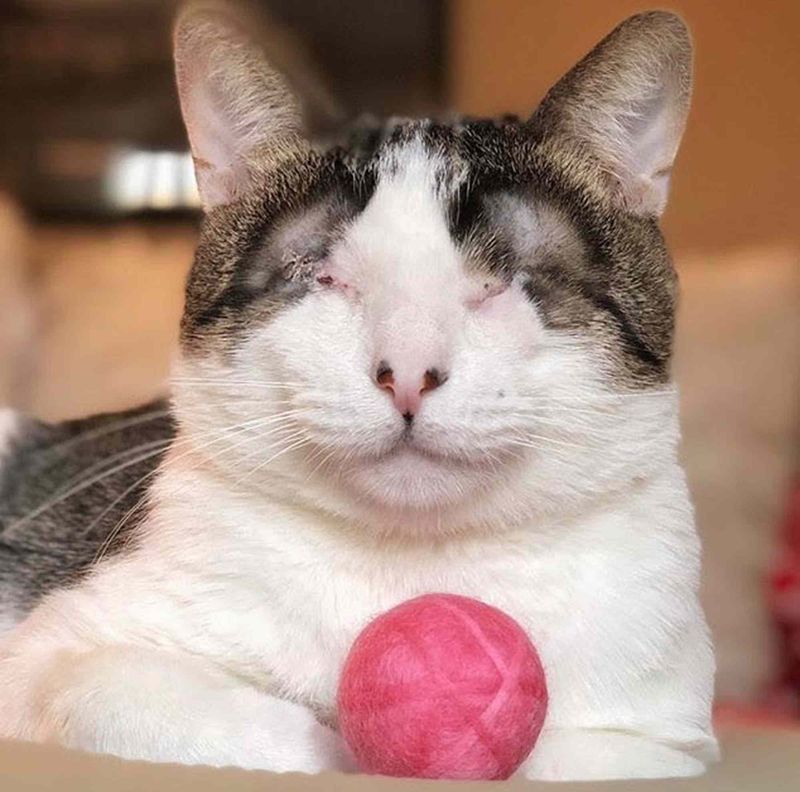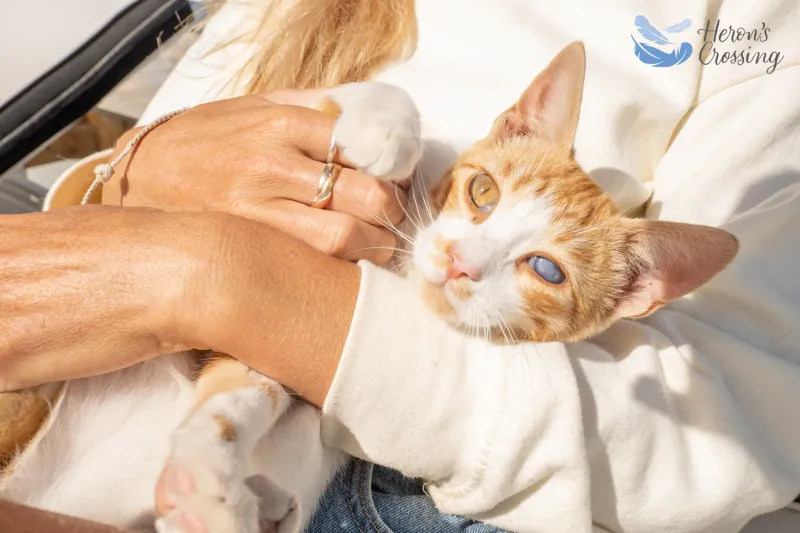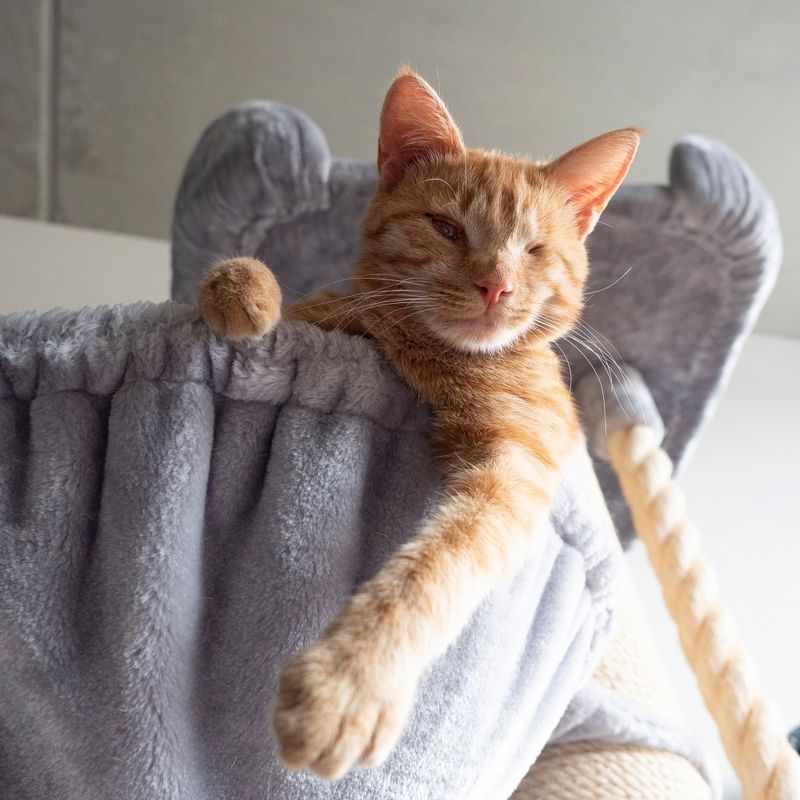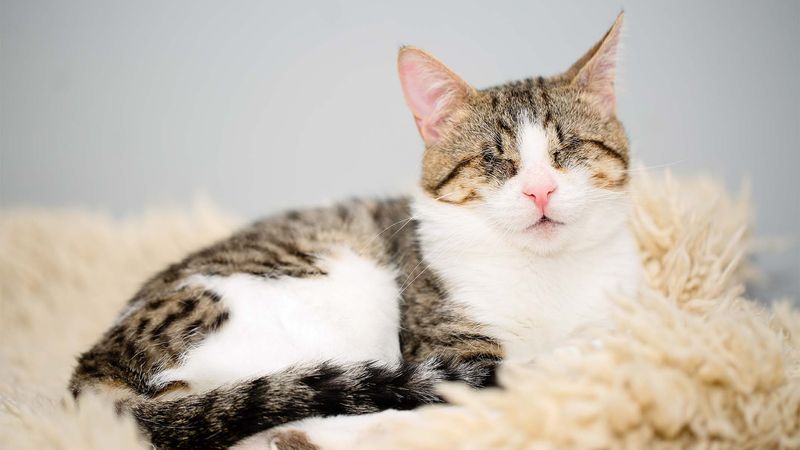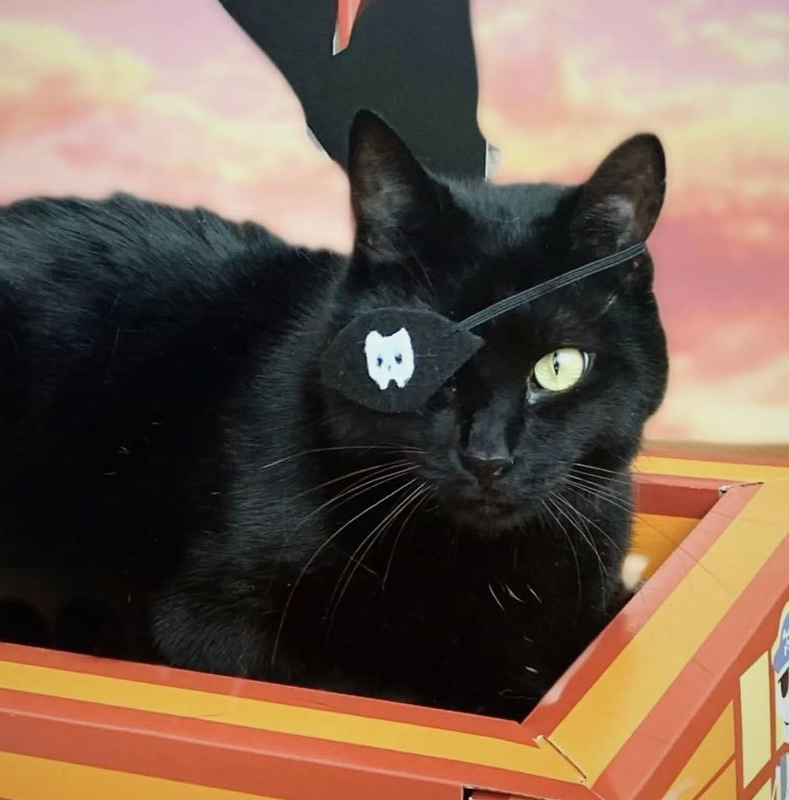📖 Table of Content:
- 1. Safe and Familiar Environment
- 2. Use Scent Markers
- 3. Consistent Daily Routine
- 4. Tactile Toys and Interactive Play
- 5. Accessible Food and Water Stations
- 6. Soft and Audible Call Bell
- 7. Secure Outdoor Experience
- 8. Gentle and Calm Interaction
- 9. Strategic Lighting
- 10. Auditory Clues
- 11. Comfortable Resting Areas
- 12. Engaging Scented Toys
- 13. Routine Health Checks
- 14. Training with Positive Reinforcement
- 15. Mindful Grooming Sessions
- 16. Turn It All Into Play
Caring for a visually impaired cat requires patience and understanding, but it can be deeply rewarding. With a few thoughtful changes to their environment and routine, it’s possible to help them feel secure and comfortable. By being aware of their needs, their daily life can become more manageable and enjoyable.
Visually impaired cats may rely on other senses, like smell and touch, to explore their world. Small adjustments in the home can make a big difference in how they navigate their surroundings. Creating a safe, consistent environment helps your cat move around with confidence and feel more at ease.
Making life easier for a visually impaired cat doesn’t have to be complicated. Simple changes, along with plenty of love and attention, can significantly improve their quality of life. Below are 16 practical tips to ensure that your cat remains happy, healthy, and comfortable despite their visual challenges.
1. Safe and Familiar Environment
Ensuring your visually impaired cat’s surroundings are safe and predictable is key. A consistent home layout reduces anxiety and helps her navigate more easily. Adding soft cushions and accessible ramps or steps can help her move freely without the risk of injury.
Additionally, use tactile markers like rugs or mats to define different areas. These markers act as guides, helping her navigate the space with ease. Making her environment predictable and secure not only boosts her confidence but also enhances her overall well-being.
2. Use Scent Markers
Scent markers can be a great way to assist your visually impaired cat in recognizing different areas. Use distinct scents to mark important locations such as food, litter boxes, and resting areas. Opt for natural and safe scents like lavender or rosemary that won’t overwhelm her sensitive nose.
This method can make pathways clearer, ensuring your cat feels more secure moving around. Use different scents for different zones, but remember to keep them consistent. This practice not only aids navigation but also enriches her sensory experiences, making her environment much more engaging.
3. Consistent Daily Routine
A steady daily routine provides a sense of security for a visually impaired cat. Having set times for meals, play, and rest helps her feel more comfortable and less anxious. Consistency in daily activities ensures she knows what to expect, creating a stress-free environment.
Incorporating gentle, daily playtime with bells or crinkle toys can stimulate her senses and encourage physical activity. By keeping to a routine, you provide a stable framework that helps her feel comfortable and cared for, even when she can’t see.
4. Tactile Toys and Interactive Play
Interactive play is important for a visually impaired cat’s mental and physical health. Choose toys that engage her other senses, such as textured balls or toys with bells. Crinkle tunnels and toys that make noises can provide stimulation and encourage her natural hunting instincts. Rotate toys regularly to keep her interested and challenged.
Engaging in playtime with her not only strengthens your bond but also provides essential exercise. By incorporating tactile and auditory elements into play, you ensure she remains active, happy, and mentally stimulated, even without sight.
5. Accessible Food and Water Stations
Providing easy access to food and water is crucial for your cat’s well-being. Non-slip mats can prevent bowls from shifting, making them easier to locate. Keeping the bowls in a consistent spot ensures she always knows where to find them, while elevated feeders offer comfort and convenience.
Consider using bowls with distinct textures or shapes to help her differentiate between food and water. These small adjustments can significantly enhance her ability to eat and drink independently, promoting better health and well-being.
6. Soft and Audible Call Bell
Using a soft and audible call bell can be a useful tool for guiding your visually impaired cat. Attach bells to your shoes or use a specific bell sound to signal meal times, play sessions, or bedtime. This auditory cue helps her locate you or specific activities without visual clues. Be consistent with its use so she can associate the sound with certain actions or expectations.
This practice not only aids in effective communication but also helps build her confidence as she gets accustomed to her environment through sound.
7. Secure Outdoor Experience
Providing a visually impaired cat with a safe outdoor experience can be enriching. Ensure your backyard is secure with cat-proof fencing to prevent escape. Incorporate different textures like grass, sand, or pebbles to stimulate her senses and allow exploration. Supervised outdoor time can boost confidence and provide valuable mental stimulation.
Consider using a harness and leash for additional safety during outdoor adventures. These precautions let her enjoy the outdoors safely, offering diverse experiences while ensuring she still feels protected.
8. Gentle and Calm Interaction
When interacting with a visually impaired cat, keeping things calm and gentle is key to building trust. Approach her quietly and speak softly to avoid causing stress. Use slow, gentle strokes to pet her, allowing her to feel safe and secure in your presence.
Consistent, gentle interactions help her associate your presence with safety and affection, enhancing her emotional well-being and further strengthening your bond.
9. Strategic Lighting
Strategic lighting can be quite beneficial for a visually impaired cat, especially if she has partial vision. Use nightlights or soft lamps to illuminate pathways at night, helping her navigate safely. Ensure her sleeping and eating areas are well-lit to avoid disorientation. Adjust lighting based on her needs, maintaining a balance between illumination and comfort.
By strategically using lights, you can enhance her ability to move around confidently, reducing stress and making her home environment more welcoming.
10. Auditory Clues
Incorporating auditory clues can assist a visually impaired cat in understanding her surroundings. Consider using wind chimes or soft music to mark specific areas within your home. These sounds can serve as landmarks, helping her navigate and feel more secure. Ensure the sounds are gentle and not overwhelming.
Auditory cues not only aid in orientation but also create a soothing atmosphere, making her environment more enjoyable and less intimidating.
11. Comfortable Resting Areas
Creating cozy resting areas is crucial for your visually impaired cat’s comfort. Select soft beds or cushions that provide warmth and support for restful sleep. Keep these resting spots away from busy areas to ensure she can relax peacefully and safely.
Having dedicated, comfortable resting places helps her unwind and feel secure, significantly enhancing her overall comfort and quality of life.
12. Engaging Scented Toys
Scented toys can be a fun and engaging way to stimulate your visually impaired cat’s senses. Toys filled with catnip or other feline-safe scents like lavender can enhance playtime and provide delightful sensory experiences.
Rotate these toys regularly to maintain her interest and excitement. Introducing varied scents keeps her engaged and mentally stimulated, ensuring she remains active and entertained, even without visual cues.
13. Routine Health Checks
Routine health assessments are key for visually impaired cats to maintain their health. Regular vet visits allow you to keep track of her well-being and address issues before they escalate. A care plan tailored to her special needs will ensure she receives the right treatment for a happy life.
These check-ups ensure she receives the best possible care, keeping her healthy and comfortable throughout her life.
14. Training with Positive Reinforcement
Training a visually impaired cat may seem daunting, but positive reinforcement can make it a rewarding experience. Use treats and soothing voice commands to encourage desired behaviors. Keep training sessions short and fun, ensuring they are a positive experience for her.
Over time, she’ll associate the sound of your voice and the treats with her achievements, boosting her confidence and adaptability. Tailoring training to her needs helps strengthen your bond and enhances her independence.
15. Mindful Grooming Sessions
Caring for your visually impaired cat through gentle grooming is an important way to show affection. Use soft brushes and quiet, comforting words to make her feel at ease. Regular grooming sessions not only keep her coat healthy but also strengthen your bond, ensuring she feels cared for and secure.
Structured, gentle grooming routines enhance her trust in you, offering emotional comfort and keeping her looking and feeling her best.
16. Turn It All Into Play
Transform your home into a playful pirate haven for your visually impaired feline friend. Dress them in adorable pirate costume accessories like a soft hat and eyepatch. Fill a small treasure chest with catnip toys for an exciting tactile adventure.
Create a pirate ship atmosphere using wooden textures and gentle sound effects of the sea. Encourage interactive play by becoming a fellow pirate, enhancing their auditory experience. Enrich their world with themed play sessions that stimulate other senses. This imaginative setup nurtures your cat’s curiosity and provides joy, turning daily living into an engaging treasure hunt.
